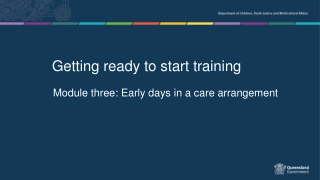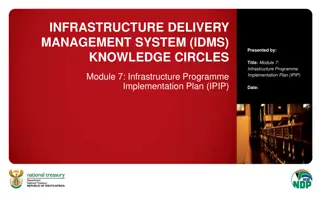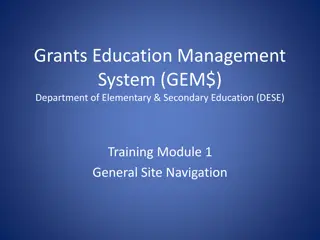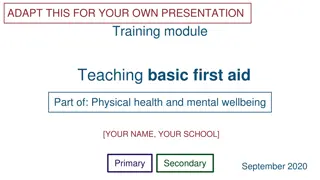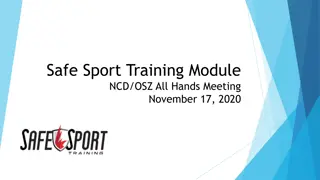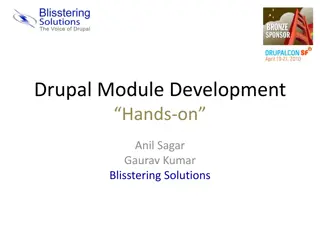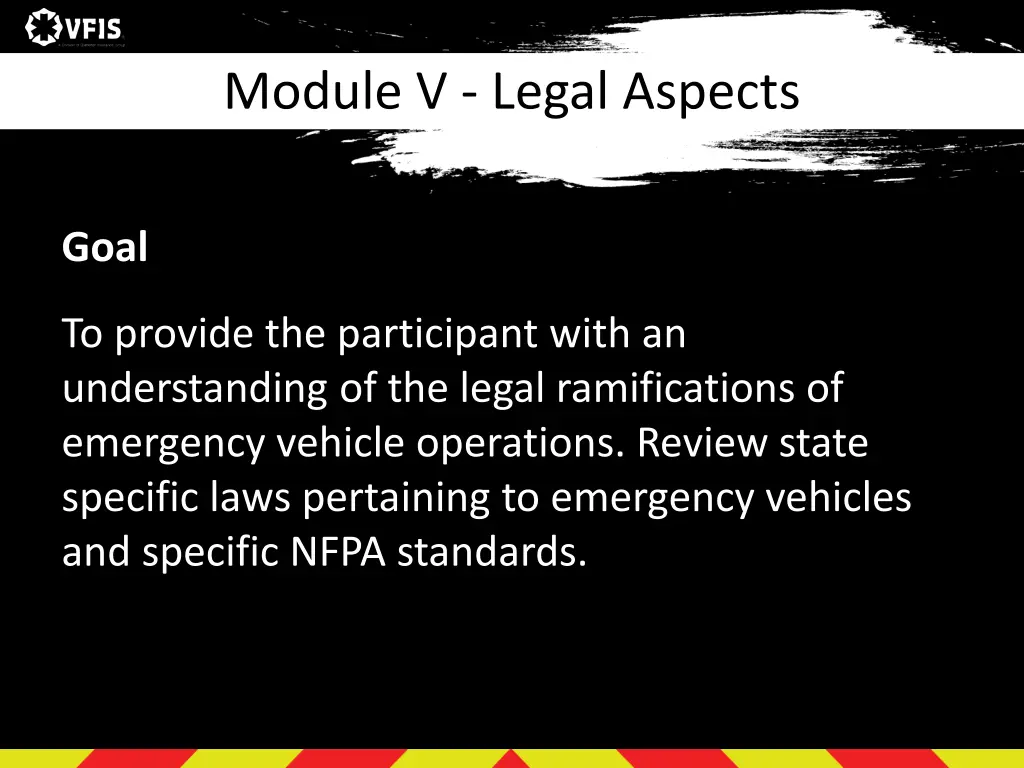
Legal Ramifications of Emergency Vehicle Operations: Key Principles and Laws
Explore the legal framework impacting emergency vehicle drivers, encompassing state laws, NFPA standards, liability concepts, and specific driving regulations. Understand the legal principles governing emergency vehicle operations and driver responsibilities.
Download Presentation

Please find below an Image/Link to download the presentation.
The content on the website is provided AS IS for your information and personal use only. It may not be sold, licensed, or shared on other websites without obtaining consent from the author. If you encounter any issues during the download, it is possible that the publisher has removed the file from their server.
You are allowed to download the files provided on this website for personal or commercial use, subject to the condition that they are used lawfully. All files are the property of their respective owners.
The content on the website is provided AS IS for your information and personal use only. It may not be sold, licensed, or shared on other websites without obtaining consent from the author.
E N D
Presentation Transcript
Module V - Legal Aspects Goal To provide the participant with an understanding of the legal ramifications of emergency vehicle operations. Review state specific laws pertaining to emergency vehicles and specific NFPA standards.
Module V - Legal Aspects Objectives Explain the legal climate which exists and its impact upon emergency vehicle drivers and the associated emergency service organizations. Identify the primary legal principles which affect emergency vehicle drivers and recognize the implications for emergency vehicle operation.
Module V - Legal Aspects Objectives (Cont d) Identify specific state driving laws. Discuss the impact of individual state or local laws, standards, and requirements on emergency vehicle driver training and operations.
Example of Privileges Proceed through a red traffic signal or stop sign - but only with due regard for the welfare of others. Exceed the posted speed limit-but only with due regard for the welfare of others. Travel against the normal flow of traffic but only with due regard for the welfare of others. PM Fill-In
Five Categories of Requirements State Motor Vehicle and Traffic Laws Nationally Recognized Standards State and Federal Occupational and Safety Regulations Local Ordinances Organizational Policies, Procedures, and Guidelines PM Fill-In
Legal Principles and Terms Subject to laws unless specific exemption is provided. Exemptions apply only when the emergency vehicle is involved in an emergency operation. Emergency vehicle drivers can be found criminally guilty of a crime and/or civilly liable.
Legal Principles and Terms Liability Due Regard Negligence Gross Negligence Vicarious Liability
Legal Principles and Terms Judicial review based on . Concepts like due regard, and reckless disregard for the safety of others
Emergency Vehicle Driving Laws 1. CDL Requirements 2. Exemptions Granted to Emergency Vehicle Drivers 3. Rules for Members of the Public 4. Rules for Emergency Responders in POVs
Other Requirements and Standards State Laws and/or Administrative Regulations Local Ordinances or Statues Organizational Rules and Regulations and Standard Operating Guidelines
Practical Application Review STATE Motor Vehicle Code
New York Title I, Article I, Section 101 Authorized emergency vehicle. Every ambulance, police vehicle or bicycle, correction vehicle, fire vehicle, civil defense emergency vehicle, emergency ambulance service vehicle, blood delivery vehicle, county emergency medical services vehicle, environmental emergency response vehicle, sanitation patrol vehicle, hazardous materials emergency vehicle and ordnance disposal vehicle of the armed forces of the United States.
New York Title I, Article I, Section 114-b Emergency operation. The operation, or parking, of an authorized emergency vehicle, when such vehicle is engaged in transporting a sick or injured person, transporting prisoners, delivering blood or blood products in a situation involving an imminent health risk, pursuing an actual or suspected violator of the law, or responding to, or working or assisting at the scene of an accident, disaster, police call, alarm of fire, actual or potential release of hazardous materials or other emergency. Emergency operation shall not include returning from such service.
New York Title V, Article 19, Section 501 Drivers Licenses (d) Exceptions. (i) (B) a police vehicle or fire vehicle during its use in an emergency operation as defined in section one hundred fourteen-b of this chapter, or in the performance of official duties, or activities related to the execution of emergency governmental functions (C) a vehicle owned and identified as being owned by the state or a political subdivision thereof or an ambulanceservice as defined in subdivision two of section three thousand one of the public health law or a voluntary ambulance service as defined in subdivision three of such section and used to provide emergency medical service as defined in section three thousand one of the public health law, or to perform official duties, or activities related to the execution of emergency governmental functions pursuant to section 383.3 (d)(2) of title 49 of the code of federal regulations, may be operated with any class license other than a class DJ, M or MJ license.
New York Title VII, Article 23, Section 1104 (a)The driver of an authorized emergency vehicle, when involved in an emergency operation, may exercise the privileges set forth in this section, but subject to the conditions herein stated. (b)The driver of an authorized emergency vehicle may: 1. Stop, stand or park irrespective of the provisions of this title 2. Proceed past a steady red signal, a flashing red signal or a stop sign, but only after slowing down as may be necessary for safe operation 3. Exceed the maximum speed limits so long as he does not endanger life or property 4. Disregard regulations governing directions of movement or turning in specified directions
New York Title VII, Article 23, Section 1104 (e) The foregoing provisions shall not relieve the driver of an authorized emergency vehicle from the duty to drive with due regard for the safety of all persons, nor shall such provisions protect the driver from the consequences of his reckless disregard for the safety of others.
The Mission of NFPA NFPA standards for safe driving are NOT the law in most states. Relevant NFPA standards are actually guidelines which go beyond legal requirements of most state law.
Limitations of NFPA Standards NFPA codes, standards, recommended practices, and guides are developed through a consensus standards development process approved by the American National Standards Institutes.
Limitations of NFPA Standards In issuing and making this document available, the NFPA is not undertaking to render professional or other services for or on behalf of any person or entity. Anyone using this document should rely on his or her own independent judgment or, as appropriate, seek the advice of a competent professional in determining the exercise of reasonable care in any given circumstances.
Relevant NFPA Standards NFPA 1451-Fire Service Vehicle Operations Training Program NFPA 1500-Fire Department Occupational Safety and Health Program
NFPA 1451 Chapter 7.1.3 Any Stop Signal (i.e., sign, light or traffic officer) Blind Intersections Intersections Where All Lanes of Traffic Cannot Be Seen by Operator A Stopped School Bus
NFPA 1500 Chapter 6.2.8 When Directed by a Law Enforcement Officer Red Traffic Lights Stop Signs Negative Right-of-Way Intersection Blind Intersections Cannot Account For All Lanes of Traffic Other Intersection Hazards Stopped School Bus With Lights Flashing
Adopting Sections of NFPA Standards Consult with your legal advisor to ensure that your SOGs do not reduce or eliminate any immunity or other available defense. Qualify the standard by stating that drivers will comply with these standards unless due regard dictates or state law permits otherwise. In any event, establish a peer review process to review every incident and to identify any situation which deviates from any SOG.
Ohio Paramedic Jailed In Deaths From Ambulance Crash On Oct. 16, an Ohio court convicted Michael Montecalvo, EMT-P, of involuntary manslaughter and sentenced him to two to ten years in prison in the deaths of a pregnant woman and her unborn fetus. An ambulance driven by Montecalvo killed Angela Robinson and seriously injured a 6-year-old passenger in a collision at an Elmyra, Ohio, intersection on April 26. According to a spokesman, failure to exercise due regard for the safety of others while operating an emergency vehicle was an overwhelming factor in the case.


